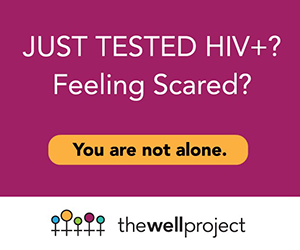Jennifer Johnsen, MD, MPH, Managing Editor
Last week, the 4th International Workshop on HIV & Women convened in Washington, DC. As the most well-attended meeting yet, it was a huge success. Featuring expert presentations specific to the prevention and treatment of HIV for women, the conference covered a variety of topics, including pre-exposure prophylaxis (PrEP), the inclusion of women in HIV research, models of care, conception and pregnancy, HCV-HIV coinfection, and antiretroviral therapy.
PrEP for women
A thorough review of what we know about PrEP for women indicated that both tenofovir and Truvada (tenofovir/emtricitabine) are generally safe for women without pre-existing kidney disease. The most common side effect is nausea, and some women experience a small but significant drop in bone mineral density (a measure of bone strength). Current evidence does not suggest that women who take PrEP engage in riskier sexual behaviors. Lastly, because pregnancy appears to be a period of high vulnerability to HIV, we may want to reconsider current guidelines that suggest that PrEP be stopped when women become pregnant.
Women in HIV research
Women represent more than half of all people living with HIV – that's more than 17 million women living with HIV around the world. Yet as one telling presentation revealed, the number of women included in clinical trials lags far behind reality. A review of scientific studies from 1994 – 2011 showed that women accounted for an average of only 19 percent of all participants in studies of antiretroviral therapies. In studies for a cure for HIV it was even lower (11 percent). Women's participation in trials for HIV vaccines was the highest at 38 percent (note: women in these studies were HIV-negative).
The review also showed that antiretroviral studies conducted in high-income countries included fewer women than those in low- and middle-income countries (18 percent v. 50 percent). Those studies that receive public funding (e.g., government sources) were the worst offenders, including an average of only 17 percent women. In particular, studies receiving funding from the National Institutes of Health (NIH) consistently included fewer women than those studies that did not receive NIH funding.
While the proportion of women living with HIV (HIV+) in antiretroviral studies has increased over time, it remains remarkably low. As we continue to research appropriate prevention and treatment interventions for women, it is crucial that women be included – in study participation and design. If there is one thing experience has shown us will increase the success of future interventions, it is that they must be designed not for the women, but with the women they are intended to serve.
Models of care
There were several good presentations describing how care is provided to women living with HIV in the US, the UK, and in resource-limited settings. While it was wonderful to hear that deaths from HIV have decreased globally by 30 percent, it was also disturbing to hear that HIV deaths among adolescents have increased by half. Researchers also discussed young women's enthusiasm for online, group-based interventions and the potential for trauma-informed primary care to improve the health of HIV+ women.
Conception and pregnancy
Many serodiscordant couples (one HIV+ partner, one HIV- partner) are now considering using PrEP when they try to get pregnant (also know as PrEP-C, or PrEP for conception). Current evidence does not suggest that PrEP-C conveys any additional protective benefit to the HIV-negative person when her/his HIV+ partner is virally suppressed on antiretroviral therapy. Furthermore, one study from Canada performed an economic evaluation of PrEP-C and found it not to be cost-effective relative to unprotected intercourse restricted to timed ovulation.
Hepatitis C (HCV)/HIV coinfection
Some of the most exciting developments presented at the conference were related to new HCV treatments and their effectiveness among those coinfected with HCV and HIV. These developments are especially important given what we now know about how HIV negatively affects the course of HCV. Specifically, coinfected people:
- Have a 10 percent higher viral persistence
- Tend to have higher HCV viral loads
- Tend to develop liver cirrhosis (scarring of the liver) and experience liver failure more often
- Tend to have a weaker response to treatment with interferon
While women are more likely than men to clear HCV without treatment and less likely to develop cirrhosis, they are much more vulnerable to the negative effects of alcohol use while infected with HCV.
There are now several direct-acting antivirals (DAAs) to treat HCV infection. The protease inhibitors Victrelis (bocepravir), Incivek (telaprevir), and Olysio (simeprevir), when added to a regimen of pegylated interferon and ribavirin, show improved cure rates. While the most common side effects for Victrelis are anemia and dysgeusia (bad taste in the mouth), rash has proven the most common side effect for Incivek and Olysio. Because these three DAAs are protease inhibitors, they can interact with and change the effectiveness of antiretroviral therapies. To sort out these somewhat complicated drug interactions, visit www.hep-druginteractions.org.
Solvadi (sofosbuvir) is a nucleotide analog that can be used successfully without pegylated interferon. It provides generally higher cure rates, fewer side effects, and a shorter course of therapy compared to other treatments. Solvadi's most commonly reported side effects are headache and fatigue.
Antiretroviral therapy (ART) for women
Workshop attendees also received an update on the state of ART for women. The good news is that newer HIV drugs continue to evolve and that women are living longer, healthier lives with HIV. This news is complicated, however, by the fact that HIV+ people are now exposed to longer periods of antiretroviral therapy. Therefore it is important to look at both short-term and long-term safety and tolerability of ART.
Here are some highlights:
- Studies show that the integrase inhibitors dolutegravir, elvitegravir, and raltegravir appear effective, well-tolerated, and of limited risk of drug interactions. Their safety in pregnancy remains unclear.
- Rilpivarine (a non-nucleoside reverse transcriptase inhibitor, or NNRTI) also appears effective and well-tolerated. However, it needs to be taken with a certain amount of food to work properly and may not work as well for those with high viral loads.
- Cobisistat works like ritonavir (Norvir) in that it boosts the levels of other HIV drugs (namely elvitegravir). Its most common side effects are nausea and diarrhea, and it also increases the progesterone levels in oral contraceptives (hormonal birth control).
- Tenofovir (Viread), a nucleotide reverse transcriptase inhibitor (NRTI), has been known to cause kidney problems and reduce bone mineral density. A new form of tenofovir (TAF) that accumulates in lymphoid tissue instead of blood appears to cause these problems much less often than the old form of tenofovir (TDF). For women who take tenofovir for extended periods of time, the new form of tenofovir could prove very beneficial for their overall health.
It is important to recognize that scientists' conclusions about the effectiveness or side effects of any HCV or HIV drug for women are only as strong as the number of women in the research studies on which the conclusions are based. As data at this workshop demonstrated, women continue to be grossly under-represented in clinical trials. Given that 17 million women are now living with HIV worldwide, it is now more important than ever to involve women in every step of intervention design and study if we are to change the course of the HIV/AIDS pandemic.



